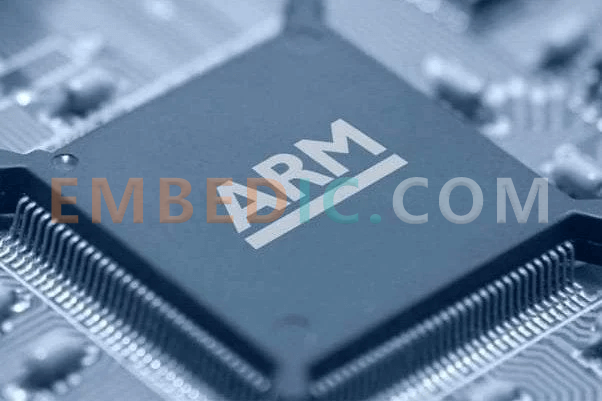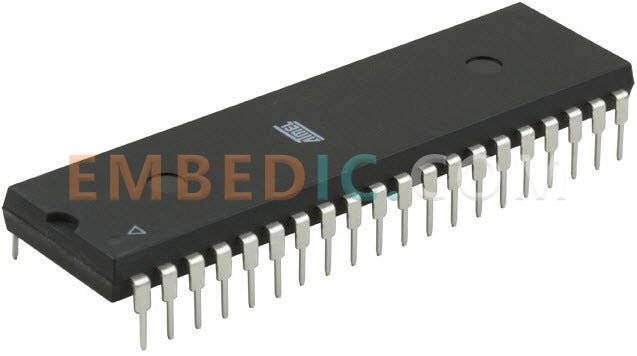Microcontrollers are small, integrated circuits that have become essential in powering modern electronics. Two popular types of microcontrollers used in various embedded systems are ARM microcontrollers and 51 microcontrollers. While they share similarities, there are some significant differences between them that are worth exploring. In this article, we will take a closer look at ARM microcontrollers and 51 microcontrollers, including their features, benefits, and differences.
An ARM microcontroller is a type of microcontroller chip that is based on the ARM (Advanced RISC Machine) architecture. The ARM architecture is known for its low power consumption, high performance, and low cost, making it popular in a wide range of embedded systems applications. For example: STM32F030F4P6.

ARM microcontrollers are used in a variety of applications, such as automotive, consumer electronics, medical devices, industrial automation, and more. They typically include features such as digital and analog I/O, timers, communication interfaces (such as UART, SPI, I2C), and in some cases, specialized hardware for tasks such as motor control, signal processing, or security.
ARM microcontrollers are often programmed in C or C++ using an integrated development environment (IDE) and a compiler that generates machine code for the specific microcontroller model. Many ARM microcontrollers also support real-time operating systems (RTOS) that can help manage complex software tasks and timing requirements.
51 microcontroller is a generic term for microcontrollers compatible with the Intel 8051 instruction system. 51 microcontrollers are widely used in home appliances, automobiles, industrial measurement and control, and communication equipment.

The 51 microcontroller is a type of microcontroller chip that is based on the MCS-51 instruction set architecture developed by Intel in the 1980s. The 51 microcontroller is also known as the 8051 microcontroller, and it has been widely used in embedded systems for decades.
The 51 microcontroller is a simple and low-cost microcontroller that has a relatively small instruction set and limited memory resources. However, it is still popular due to its ease of use, low power consumption, and low cost. It typically includes features such as digital and analog I/O, timers, communication interfaces (such as UART, SPI, and I2C), and in some cases, specialized hardware for tasks such as motor control or LCD display.
Programming the 51 microcontroller is typically done in assembly language or C using an integrated development environment (IDE) and a compiler that generates machine code for the specific microcontroller model. Many 51 microcontrollers also support real-time operating systems (RTOS) that can help manage complex software tasks and timing requirements.
ARM microcontrollers use RISC (Reduced Instruction Set Computer) architecture, which uses a 32-bit instruction set and has a powerful computing power and efficient execution speed.
The 51 microcontroller uses CISC (Complex Instruction Set Computer) architecture, which uses 8 or 16-bit instruction set and has low power consumption and low cost. 51 microcontroller has relatively weak processing power and is suitable for low to medium end applications.
ARM microcontroller programming mainly uses C language, which has better portability and code reusability. At the same time, since ARM microcontrollers use standard assembly language, they can also be programmed in assembly language.
51 microcontroller programming mainly uses assembly language, which makes 51 microcontroller has higher execution efficiency and smaller program size. At the same time, 51 microcontroller also supports C programming language.
ARM microcontrollers usually have more memory space than 51 microcontrollers and can integrate more memory on a single chip. This allows ARM microcontrollers to have more storage capacity and be able to handle more complex tasks.
The 51 microcontroller has relatively less storage space, but it has faster execution speed because its code and data are stored in the same ROM.
Due to the powerful computing power and efficient execution speed of ARM microcontroller, it is widely used in high-end applications such as smartphones, tablet PCs, digital cameras, etc.
Because of its low power consumption and low cost, the 51 microcontroller is widely used in low-end applications, such as electronic scales, electronic thermometers, electronic clocks, etc.
To sum up, ARM microcontroller and 51 microcontroller each have advantages and disadvantages, and should be selected according to actual needs, for example, Yufan Micro focuses on 8-bit microcontroller production and supply, which has great price advantage in the consumer field.
In conclusion, both ARM microcontrollers and 51 microcontrollers have their advantages and disadvantages, and the choice between them depends on the specific requirements of the application.
ARM microcontrollers are generally faster, more power-efficient, and offer more advanced features, while 51 microcontrollers are easier to program and have a longer history of use in various applications. As technology continues to advance, we can expect to see further improvements in both types of microcontrollers, enabling even more powerful and sophisticated embedded systems in the future.
Manufacturer: Texas Instruments
IC DSP FIX/FLOAT POINT 176HLQFP
Product Categories: DSP
Lifecycle:
RoHS:
Manufacturer: Texas Instruments
IC DSP FIX/FLOAT POINT 176HLQFP
Product Categories: DSP
Lifecycle:
RoHS:
Manufacturer: Texas Instruments
IC FIXED-POINT DSP 361NFBFA
Product Categories: DSP
Lifecycle:
RoHS:
Manufacturer: Texas Instruments
IC DGTL MEDIA PROCESSR 684FCBGA
Product Categories: DSP
Lifecycle:
RoHS:
Looking forward to your comment
Comment